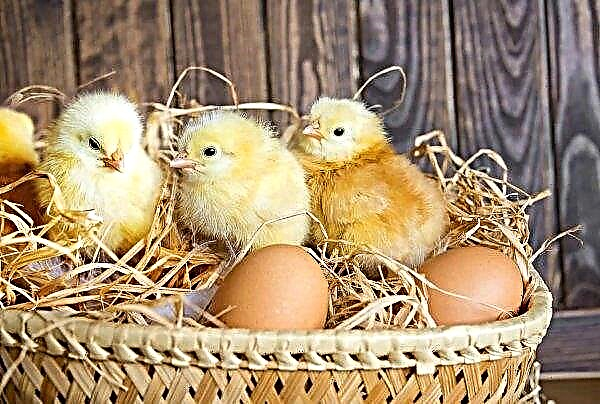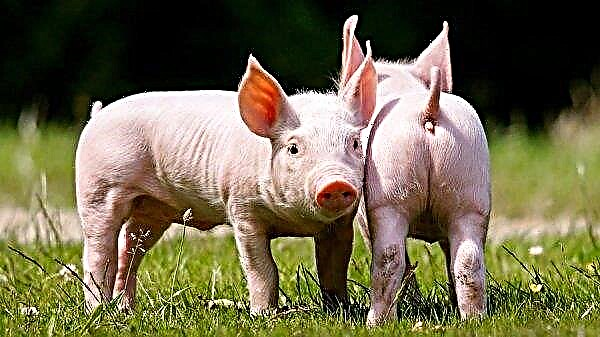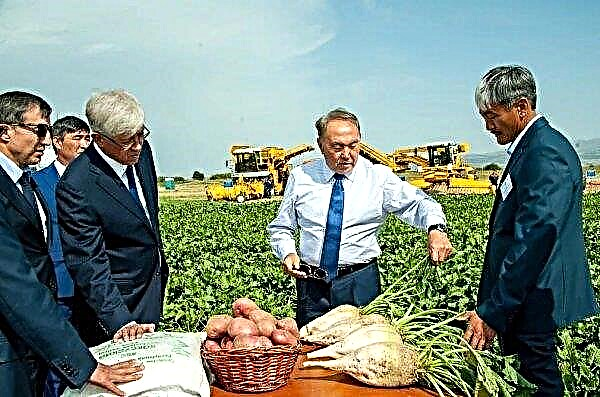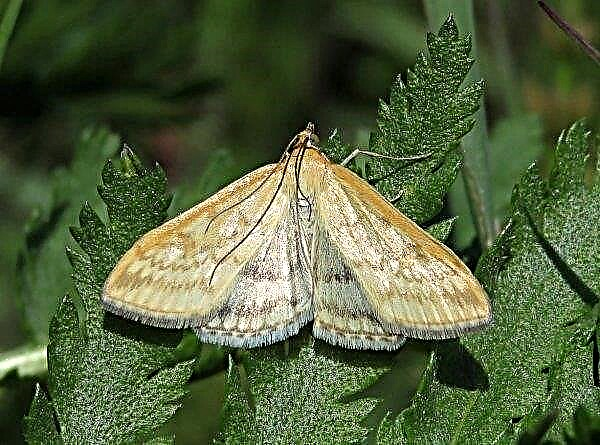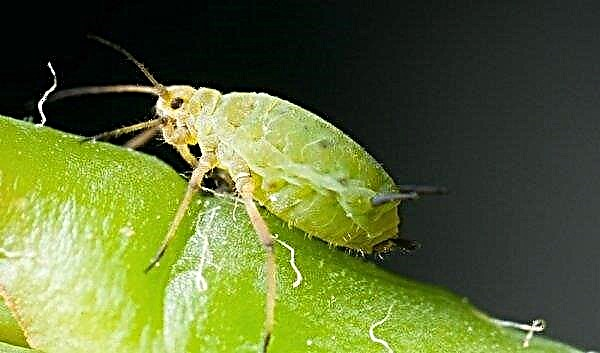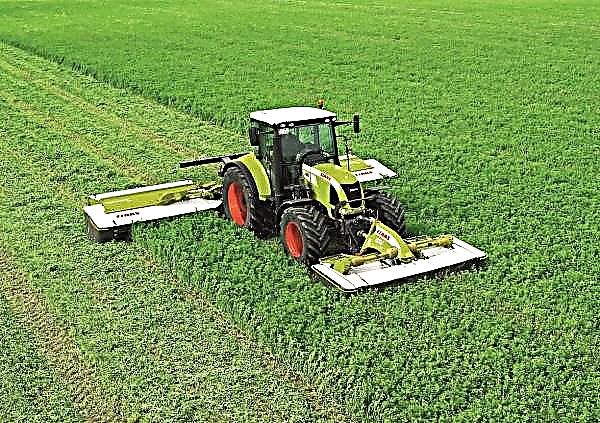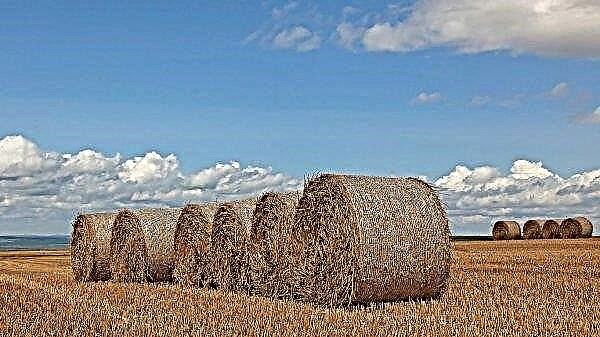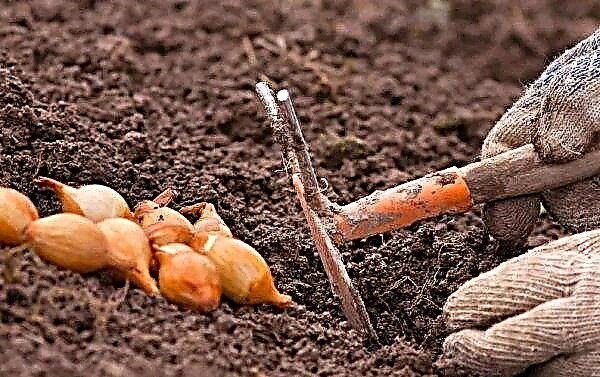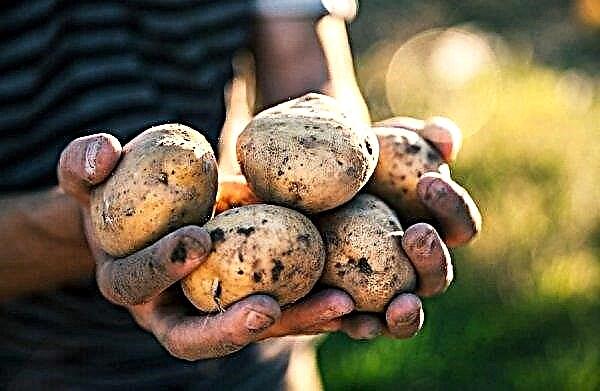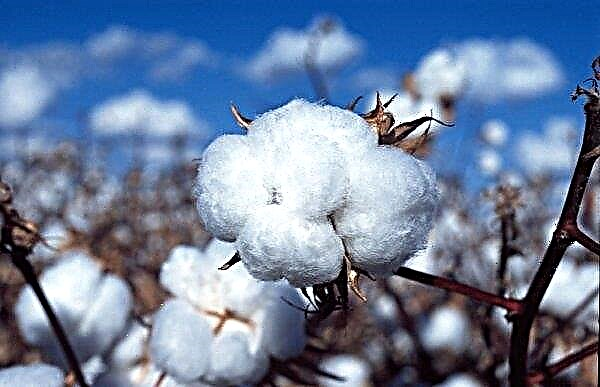Among tomatoes, there are many varieties unsuitable for industrial production, but actively cultivated by summer residents for their interesting taste characteristics. It is to such varieties that orange persimmons of the Persimmon variety can be attributed, having an original sweetish taste and fruity aroma. Salads and sauces from fruits of such an atypical color and a sweetish taste are very attractive. Let us consider in more detail what a Persimmon tomato variety is, its characteristics, the best conditions for obtaining the maximum yield, methods of cultivation, care and control of diseases and pests.
Description and characteristics of the variety
The Persimmon tomato variety was obtained experimentally by workers at the Moscow Agricultural Academy named after K.A. Timiryazev. It was recognized as a variety in 2009, and it immediately gained great popularity among the owners of summer cottages and household plots. In different seed manufacturers, the shape of the persimmon tomato fruit may vary slightly, some of them have weak ribbing.. This variety is sold by many manufacturers: "Siberian Garden", "Gavrish", "SeDek", "NASKO" and many others.
Did you know? In Russia, the tomato culture was first grown as an exotic plant, since the fruits did not have time to ripen. The full ripeness of the tomatoes was obtained by the Russian botanist Andrei Timofeevich Bolotov, using the seedling method and ripening the fruits.
Persimmon tomato has the following characteristics:
- mid-ripening ripening dates - 110 days from the appearance of sprouts from the ground;
- the determinant type of tomatoes, forms a medium-tall bush with a height of about 0.7–0.9 m, but in greenhouse conditions it can grow up to 1.5 m;
- weakly branched bush overgrows with a large number of leaves, requires the removal of the largest of them and pinching;
- medium-sized leaves and a light green color;
- inflorescences begin to appear on the bush from the 7th leaf;
- the shape of the tomatoes is round, slightly flattened;
- fruit mass on average 300-400 g;
- on each brush there are 4-6 tomatoes;
- the stalk has a green spot, the disappearance of which indicates the full ripening of the fetus;
- ripe tomatoes are painted in a bright orange color, similar to the color of persimmon, as a result of which this variety is called this fruit;
- the fruit has a thin but strong skin;
- has a pleasant fruity aroma;
- Persimmon tomatoes are well stored and transported;
- the pulp is juicy, sweetish, with high dry solids (at the level of 5–7%), when it overrides, acidity appears in it;
- no resistance to disease;
- yields can reach up to 9 kg per 1 sq. km. m, and from one bush usually collect 4-5 kg;
- the highest yield is obtained in greenhouse conditions;
- per 1 sq. m is recommended to plant 3-4 bushes.

Advantages and disadvantages of the variety
- The Persimmon tomato variety has many undoubted advantages:
- high productivity;
- unusual color, pleasant taste and aroma of the fruit;
- high concentration of carotenoids;
- universal use of fruits;
- extended fruiting period (before cold weather);
- low levels of organic acids, which makes it dietary;
- good fruit storing and transportation.
- Its disadvantages are:
- exacting care;
- disease instability;
- the need for garter.
Did you know? Tomatoes are leaders in the content of the lycopene carotenoid, the intake of which is the prevention of cancer, cardiovascular disease, and cataracts. Studies have shown that there are more antioxidants in bright orange tomatoes than in red fruits.
Features of growing tomatoes
This variety is not for lazy gardeners. It requires increased attention to itself and is prone to many diseases of tomatoes. It is necessary to take all measures for the prevention of diseases, to ensure optimal soil moisture and adequate lighting, to avoid temperature differences. This variety shows good results in the greenhouse, but it can be quite successfully grown in open ground in the southern regions of the Russian Federation.
Optimum microclimate
The cultivation of persimmon tomatoes requires the creation of optimal conditions for this crop. Germination of seeds should be carried out at a temperature of + 25–30 ° С, and further cultivation should be carried out at a temperature of + 22–26 ° С. This variety is demanding on soil moisture, whose optimum value is 80%. Humidity should be around 60%.
Photophilous culture requires at least 12 hours of daylight. During fruit ripening, the duration of illumination should be already 14–18 hours, and its intensity should be in the range of 20–35 thousand lux. Such light contributes to a better accumulation of dry matter, which gives the fruit an excellent taste and rich color.
Important! It should be borne in mind that at temperatures below +20 ° С the crop yield begins to fall, and if the temperature exceeds +30 ° С, the fruits will not be tied at all.
Features of sowing seeds
Tomatoes for seedlings begin to be sown in early-mid-March or taking into account its subsequent planting in a permanent place at the age of 60–65 days from the appearance of seedlings. Processing of seeds and soil before planting is required. Purchased packaged seeds from reliable manufacturers do not need to be decontaminated, since they have already been processed, but their or seed material must be decontaminated by weight. Tomato seeds are placed in a solution of potassium permanganate (1%) and held for 20 minutes, and then washed with water. Before planting, it is also recommended to soak the seeds in stimulants, for example, in Epin, or simply sprout them in gauze to check germination.
Tomato seeds are placed in a solution of potassium permanganate (1%) and held for 20 minutes, and then washed with water. Before planting, it is also recommended to soak the seeds in stimulants, for example, in Epin, or simply sprout them in gauze to check germination.
Did you know? Seeds can be kept for 24 hours in aloe juice, diluted in half with water. This will stimulate the appearance of sprouts and increase their immunity.
The soil mixture must be disinfected. To do this, it is treated with a 3% solution of copper sulfate or watered with a solution of manganese. The soil can be calcined in the oven. If the seedlings will be grown or planted in the greenhouse, then it is necessary to carry out all measures for its disinfection in the fall, and if they do not have time, then in the spring. It is best to use copper sulfate. Sowing in seedlings themselves do this:
Sowing in seedlings themselves do this:
- Fill prepared containers with soil that has already been treated.
- Make grooves in the container with a depth of 1-2 cm and a row spacing of 4-5 cm.
- Spread seeds in grooves at a distance of about 2 cm from each other.
- Sprinkle on top with soil.
- Moisten the soil again by spraying the top with spray water.
- Cover with a transparent film.
- Put the container with sowing in a warm place with a temperature of about + 25-30 ° С. Usually it is close to the heating battery.
Every day before the emergence of seedlings, it is necessary to ventilate the crops for half an hour, removing the film, and monitor the moisture of the soil. Then, when sprouts appear on the surface of the soil, the seedling box should be moved to a lighted and slightly cooler place.
Seedling Care
The place for seedlings should be well lit by the sun and illuminated by fluorescent or phytolamps up to 12-16 hours. First, young seedlings are moistened with spray water, maintaining a constant soil moisture. They also recommend using a syringe when watering young seedlings. When 2-3 leaves appear in seedlings, the tomatoes are planted in separate pots and fed with complex mineral fertilizer for tomatoes.
Important! It is necessary to water the seedlings during the day, and not at night, as a drop in temperature and high humidity can cause negative consequences.
The soil is disinfected before planting. If a solution of copper sulfate is selected for soil disinfection, then it becomes 1 percent. Each tomato is recommended to be planted in a container of at least 0.5 liters. Plants are fed 3 more times before planting. For top dressing, specialized organic top dressings from guano, biohumus or humic fertilizers are well suited.
Landing Technology
Landing in open ground is done in the absence of the threat of frost, when the average air temperature for the week was + 12-15 ° C, and the soil warmed up sufficiently (up to + 12 ° C). You can plant in a greenhouse a couple of weeks earlier. In central Russia, such temperatures are usually set in early June. Before planting, you should prepare the wells and pour them with 1% solution of copper sulfate to prevent the occurrence of late blight. They should be located with row spacing of 60 cm and at a distance of 40 cm from each other.
Do not over-thicken plantings and plant more than 4 plants per 1 sq. Km. m, as this provokes the appearance of diseases. It is necessary to make organic fertilizers in them, and the next day to plant seedlings. When planting the hole should be moistened, place a tomato in it, spreading the roots, and cover with soil. Each bush is recommended to be deepened by a couple of centimeters to form a more branched root system.
Tomato Care
The Persimmon tomato variety requires creating optimal conditions for growing this crop. Attention should also be paid to protection against diseases and pests. Timely garter and stepsoning are needed.
Fertilizers and watering
Persimmon tomatoes are important to water regularly. This variety tolerates drought relatively well, but watering must be plentiful.
Organic fertilizers (mullein, bird droppings, humus), ashes and complex mineral fertilizers containing phosphorus and potassium are perfect for fertilizing tomatoes. Superphosphate is good for fertilizing the soil. It is bred in the amount of 3 tbsp. l on a bucket of water. For feeding is 1 liter per bush.Important! It is necessary to monitor the sufficient moisture content of the soil during flowering and the appearance of fruits. Drying of the soil at this time leads to shedding of color and a decrease in the appearance of the ovary. In dry weather, the bushes are watered every 2-3 days.
 Fertilize the plant at least three times during the growing season. To stimulate flowering, you can spray with a solution of boric acid at the rate of 2 g per 10 l of water. When carrying out such spraying several times, the fruiting process is much improved.
Fertilize the plant at least three times during the growing season. To stimulate flowering, you can spray with a solution of boric acid at the rate of 2 g per 10 l of water. When carrying out such spraying several times, the fruiting process is much improved.Pasynkovka and formation of a bush
Persimmon tomatoes must be planted, as this variety is prone to thickening. If you do not carry out this procedure in a timely manner, then the yield level will significantly decrease. Stepchildren from the bush are removed when they reach a length of 6-7 cm. It is recommended to inspect the plants for the presence of stepchildren and remove them every week.
This tomato variety requires the formation of a determinant bush 0.7–0.85 m high, form a bush of 2-3 stems. All brushes leave on the main stem, and the most well-developed stepsons are chosen to form the 2nd and 3rd stem. Under the weight of massive fruits, the bushes often break, so you need to put supports and tie up plants, especially greenhouse plants. Experienced summer residents to increase the yield carry out the cutting of peripheral roots. Stop this procedure 3-4 weeks before the harvest. This stimulates the appearance of lateral branches and increases the flow of nutrients to the crop.
Experienced summer residents to increase the yield carry out the cutting of peripheral roots. Stop this procedure 3-4 weeks before the harvest. This stimulates the appearance of lateral branches and increases the flow of nutrients to the crop.
Diseases and pests
Persimmon tomatoes are susceptible to certain diseases, especially they are susceptible to late blight. Consider the most common diseases and measures to eliminate them:
- Phytophthora. This disease can be detected by brown spots, which appear first on the lower leaves, and afterwards the fruits are also affected. The main reasons are excessive moisture and prolonged heavy rains. To combat this nuisance, chemicals with a copper content (1% Bordeaux liquid) are used.
- Gray rot. It appears in the form of dark spots on the fruits. Prerequisites for the appearance may be a lack of calcium and excess moisture. To eliminate gray rot, calcium nitrate is used.
- Wireworm. Harmful to roots and stalks of tomatoes. Use the drug "Bazudin", introducing it into a mixture with sawdust in the wells. Mulch the earth with large shavings or needles.
- Scoop and whitefly. These butterflies and their larvae are sprayed with chemical preparations (Decis, Aktara), biological products (Fitoverm) or garlic infusion.
- Slug. To get rid of them, sprinkle along the rows with superphosphate or slaked lime. Instead, pour black pepper or a mixture of tobacco, ash and lime.

To prevent the appearance of diseases and insect pests, it is recommended to carry out the following preventive measures:
- disinfect seeds before planting;
- clean the site of weeds and old plant tops;
- regularly loosen and mulch the soil;
- water the tomatoes correctly;
- make organic and mineral dressings;
- do the recommended crop rotation;
- carry out preventive spraying with chemical and folk remedies.
Harvesting and storage
Harvest of persimmon tomatoes is harvested after 110-120 days from the moment of planting seeds. This usually happens in July. The peel of tomato fruits of this variety is quite dense, so they are well suited for storage and normally tolerate transportation by transport. You can store them for about a month. Moreover, the fruits have the ability to ripen in boxes during storage, if they are not ripened completely. At the same time, tomatoes retain their taste. Tomatoes of this variety are best used fresh for salads. Well suited also for preservation and juice, which will have a yellow color. The original taste and aroma, interesting orange color of persimmon tomatoes attracted the attention of many gardeners. They are not sorry to take enough time to grow and protect against diseases and pests of these tomatoes to get tasty sweet fruits of an unusual color, so similar to the southern fruit.
Tomatoes of this variety are best used fresh for salads. Well suited also for preservation and juice, which will have a yellow color. The original taste and aroma, interesting orange color of persimmon tomatoes attracted the attention of many gardeners. They are not sorry to take enough time to grow and protect against diseases and pests of these tomatoes to get tasty sweet fruits of an unusual color, so similar to the southern fruit.

